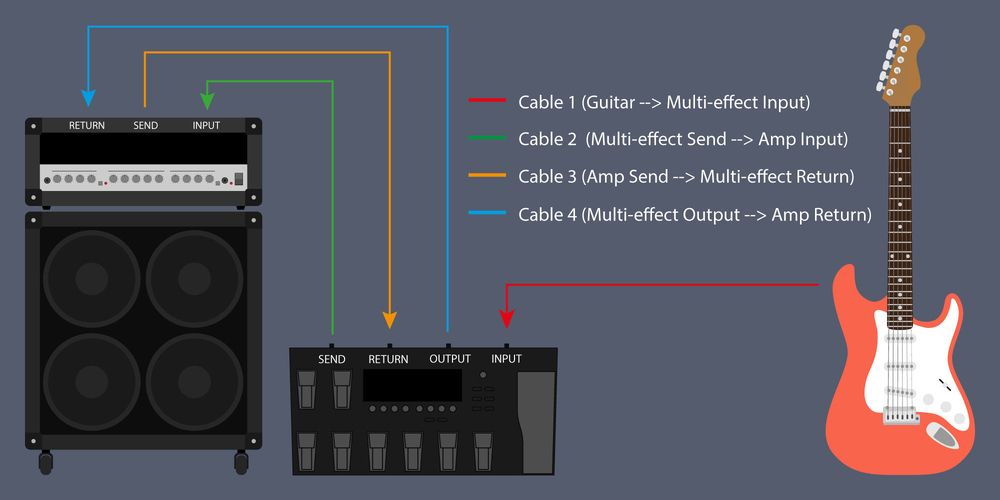14. Applications
Stand-Alone Without a Guitar Amplifier
As previously mentioned, a multi-effects unit with amp modeling can be used independently, without requiring a guitar amplifier. Instead, you can listen through monitor speakers on stage or a full-range cabinet. This setup is commonly used in live performances when it's necessary to keep the volume low, and the band listens through headphones, such as in-ear monitors. In these scenarios where there's no need for a traditional guitar amplifier or speaker, a device like this proves to be quite valuable.
With a Guitar Amplifier (Clean Sound)
Multi-effects units can, and originally, this was their primary purpose, be used in conjunction with a guitar amplifier. The straightforward method involves connecting the multi-effects unit between your guitar and the amplifier. You'd typically configure your amp for a clean sound and then utilize the multi-effects unit to create any distorted or overdriven sounds you desire, like Overdrive or Distortion effects.
With a Guitar Amplifier (In the Effects Loop)
If you want to use the amplifier's distorted sound, you can integrate the multi-effects unit into the amp's effects loop, positioned between the preamp and power amp stages. This is a practical choice for modulation effects, delay, and reverb. However, it's best to place Overdrive, Compressor, or Wah pedals in front of the amplifier's preamp for the best sound quality. If you put them in the amp's effects loop, it usually leads to a loss in sound quality. The so-called 4-cable method provides a smart solution to this issue.
With a Guitar Amplifier (4-Cable Method)
The 4-cable method utilizes four cables to connect the multi-effects unit to the guitar amplifier. This approach requires that both the amplifier and the multi-effects unit have an effects loop with Send and Return jacks. Here's how it works: The signal from the effects unit is sent through its Send jack to the standard guitar input of the amplifier. It then passes through the amp's preamp, is extracted from the Send jack of the amplifier, and returns to the Return jack of the effects unit. From there, other effects can be applied, and the signal travels from the multi-effects unit's output to the Return jack of the amp, where the power amp stage processes it. This setup allows you to position effects like Compressor, Overdrive/Distortion, and Wah Wah in front of the preamp, while modulation and ambiance effects (Reverb, Delay) come afterward. This ensures that your sound remains solid even when distorted.
Here is a typical 4-cable method connection:

Your Contacts
Product Highlights
Offers
-
Guitar Multi Effects
-
Multi Effect Processors
-
Psychoacoustic Effects
-
Vocalists
-
Voice Processor
Recommended categories
Do you like what you're seeing?






